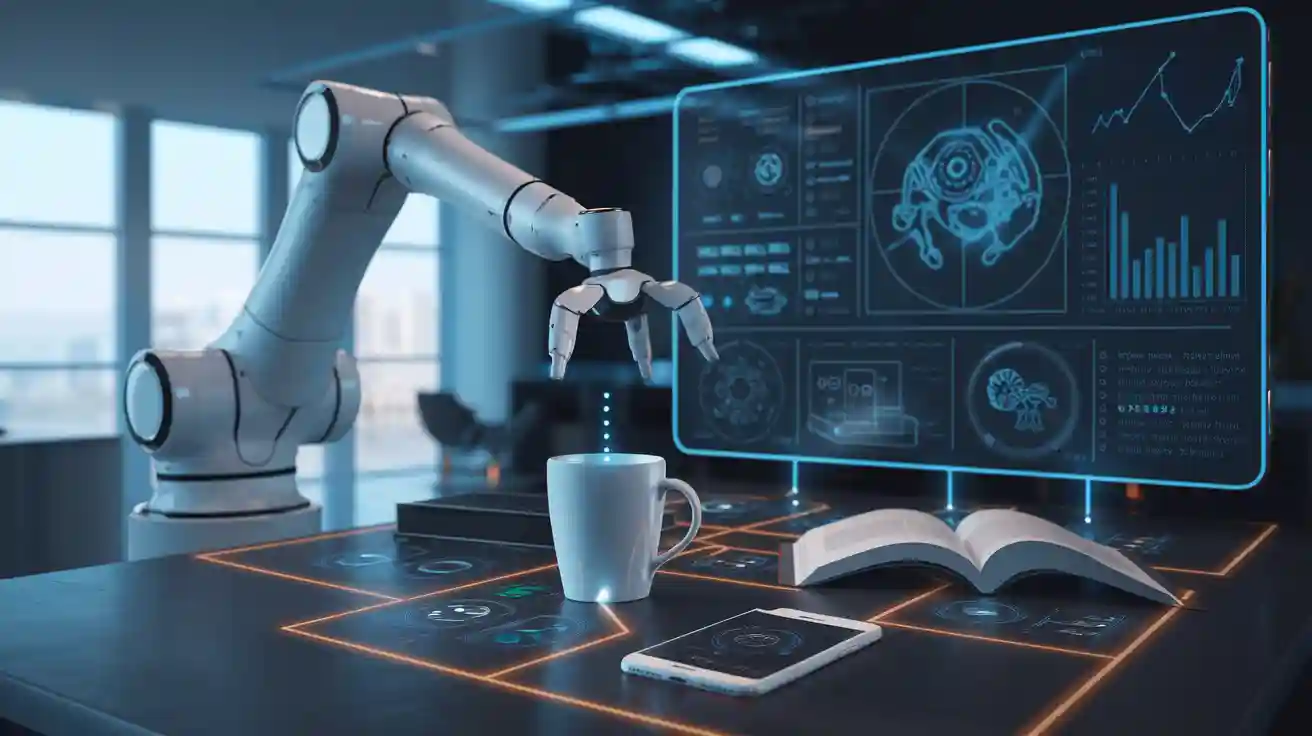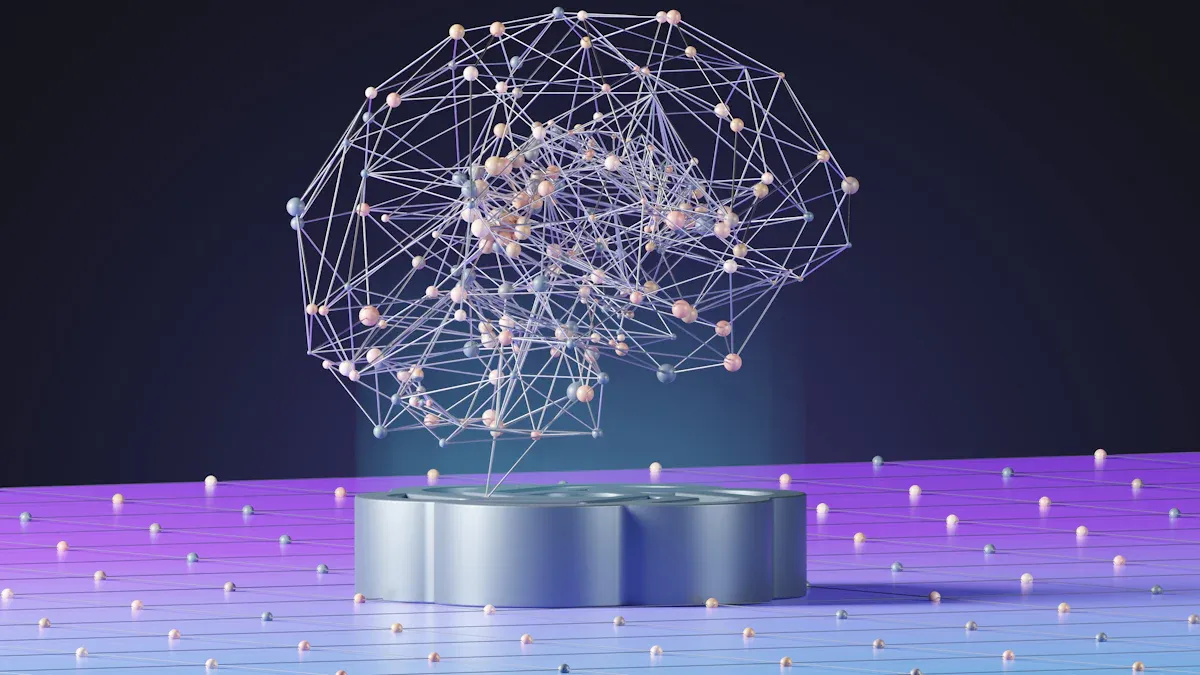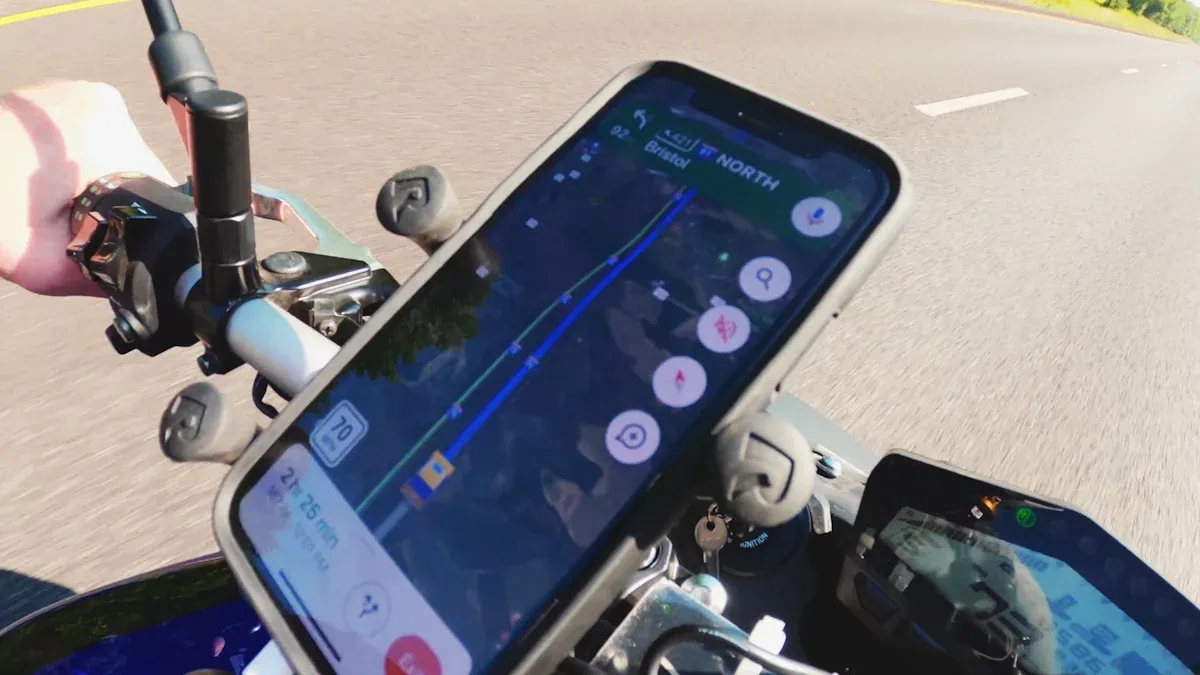Understanding Object Detection in Modern Machine Vision Systems

Object Detection machine vision systems help machines identify and locate objects in images or videos. It’s like giving them eyes to see the world. Why does this matter? It boosts automation, making machines faster and smarter. For example:
- Robotic vision systems achieve up to 99.9% accuracy, cutting errors and costs.
- Machine vision reduces inspection errors by over 90%, saving time and money.
This technology transforms industries by increasing productivity and precision. From manufacturing to healthcare, Object Detection machine vision systems play a key role in modern advancements.
Key Takeaways
- Object detection finds and spots objects in pictures or videos.
- It helps machines work better, saving time, money, and mistakes.
- Faster tech and smart devices improve object detection in cars, stores, and hospitals.
What is Object Detection?
Definition and Key Components
Object detection is a powerful technique in computer vision that allows machines to identify and locate objects within images or videos. Think of it as giving machines the ability to "see" and understand their surroundings. This process involves two main components: classification and localization. Classification determines what the object is, while localization pinpoints its position using bounding boxes.
Here’s why it’s so effective:
- It plays a critical role in advanced driver assistance systems (ADAS), helping vehicles detect lanes, pedestrians, and other obstacles to improve road safety.
- It’s widely used in industries like robotics, medical imaging, video surveillance, and even content-based image retrieval.
When you combine these components, you get a system that doesn’t just recognize objects but also understands where they are in the scene. This capability is the backbone of modern machine vision systems.
Object Detection vs. Image Classification and Localization
You might wonder how object detection differs from image classification and localization. While these terms are related, they’re not the same.
- Image Classification: This focuses on identifying the type of object in an image. For example, it can tell you if an image contains a cat or a dog, but it won’t tell you where the object is.
- Localization: This adds a layer of complexity by identifying the location of the object within the image using bounding boxes.
- Object Detection: This combines both classification and localization. It not only identifies multiple objects in an image but also determines their precise locations.
Here’s a quick comparison:
| Feature | Image Classification | Localization | Object Detection |
|---|---|---|---|
| Identifies Object Type | ✅ | ✅ | ✅ |
| Locates Object | ❌ | ✅ | ✅ |
| Handles Multiple Objects | ❌ | ❌ | ✅ |
Object detection stands out because it can handle multiple objects simultaneously, making it ideal for complex tasks like autonomous driving or inventory management.
Importance in Machine Vision Systems
Object detection is the cornerstone of machine vision systems. It’s what makes these systems reliable, efficient, and capable of transforming industries. When you use object detection algorithms, you unlock the potential for automation and precision.
Let’s look at some measurable outcomes that highlight its importance:
| Metric | Description |
|---|---|
| Precision | The ratio of true positive predictions to the total predicted positives, indicating accuracy of detections. |
| Recall | The ratio of true positive predictions to the total actual positives, showing the model's ability to find all relevant instances. |
| Mean Average Precision (mAP) | A comprehensive measure of precision across different classes, ensuring consistent performance. |
| Intersection over Union (IoU) | A metric used to evaluate the overlap between predicted bounding boxes and ground-truth boxes, crucial for defining true positives. |
These metrics prove that object detection doesn’t just work—it excels. For example, modern object detection algorithms like YOLOv9-E achieve impressive accuracy rates, as shown below:
| Metric | YOLOv9-E (COCO) | YOLOv9-E (COCO-FP) |
|---|---|---|
| mAP | 72.8 | 65.7 |
| False Positives | High | Significant |
With such advancements, you can trust object detection to enhance machine vision systems across industries. Whether it’s improving road safety, streamlining medical diagnoses, or optimizing inventory management, object detection is the key to smarter, more efficient systems.
How Object Detection Works

Traditional Computer Vision Techniques
Before deep learning took the spotlight, object detection relied on traditional computer vision techniques. These methods used handcrafted features and algorithms to identify objects. For example, edge detection and color histograms helped machines recognize shapes and patterns. You might have heard of techniques like Haar cascades or HOG (Histogram of Oriented Gradients). These were popular for tasks like face detection.
However, these methods had limitations. They struggled with complex scenes or variations in lighting and angles. Their accuracy depended heavily on how well the features were designed. While they worked for simple tasks, they couldn’t match the flexibility and precision of modern approaches.
Deep Learning-Based Object Detection Algorithms
Deep learning revolutionized object detection. Instead of manually designing features, deep learning models learn them automatically from data. This makes them more adaptable and accurate. Algorithms like YOLO (You Only Look Once), SSD (Single Shot MultiBox Detector), and Faster R-CNN are game-changers.
Here’s why they stand out:
- YOLO models excel at detecting small objects quickly by fusing features at multiple scales.
- SSD is simple and fast, making it great for real-time applications.
- Faster R-CNN balances speed and accuracy, while Cascade R-CNN reduces errors in dense images.
Studies show that deep learning models outperform traditional methods in accuracy and efficiency. For instance, YOLO-v3 outshines SSD and Faster R-CNN in tests using the Microsoft COCO dataset. These advancements make training object detection models more effective and reliable.
Addressing Challenges in Object Detection
Object detection isn’t without challenges. Models must handle variations in object size, lighting, and occlusion. They also need to balance speed and accuracy, especially for real-time tasks.
Deep learning helps tackle these issues. CNNs (Convolutional Neural Networks) automatically learn relevant features, improving both detection accuracy and processing speed. This is crucial for applications like detecting defects in manufacturing or object localization in crowded scenes.
By combining advanced algorithms with robust training techniques, modern object detection systems continue to push the boundaries of what’s possible.
Applications of Object Detection in Machine Vision Systems

Object detection is everywhere. It’s not just about identifying objects; it’s about transforming how industries operate. Let’s dive into some of the most exciting applications where machine vision systems are making a difference.
Autonomous Vehicles and Traffic Monitoring
Imagine cars that can drive themselves. Autonomous vehicles rely heavily on object detection to navigate safely. These systems identify pedestrians, other vehicles, traffic signs, and even road flaws. They don’t just see; they understand the environment in real time.
Here’s how it works:
- Object detection algorithms scan the road for obstacles.
- They predict movements and adjust the vehicle’s path to avoid collisions.
- Traffic monitoring systems use object detection to count vehicles, analyze congestion, and improve road safety.
For example, autonomous cars use computer vision solutions to detect lane markings and defects like potholes. This ensures smoother rides and fewer accidents. You’ve probably seen traffic cameras that monitor intersections. They use object detection and counting to track vehicles and optimize signal timings.
These advancements make roads safer and transportation smarter. Whether it’s autonomous vehicles or traffic monitoring, object detection is the driving force behind modern mobility.
Healthcare and Medical Imaging
In healthcare, object detection is saving lives. Medical imaging systems use it to identify abnormalities like tumors or fractures. These systems don’t just assist doctors; they enhance accuracy and speed in diagnoses.
Here’s why it’s a game-changer:
- Object detection helps locate defects in X-rays, MRIs, and CT scans.
- It supports automated inspection of medical images, reducing human error.
- Quality control in medical imaging ensures consistent and reliable results.
For instance, AI-powered systems can detect flaws in diagnostic images that might go unnoticed by the human eye. They highlight areas of concern, enabling doctors to focus on critical issues. This combination of object detection and machine vision systems is revolutionizing healthcare.
You might wonder how this impacts patients. Faster and more accurate diagnoses mean quicker treatments and better outcomes. Whether it’s identifying defects in imaging or assisting in surgeries, object detection is reshaping medical care.
Retail and Inventory Management
Retailers face challenges like managing inventory and preventing losses. Object detection steps in to simplify these tasks. Machine vision systems use it to track products, monitor shelves, and even detect flaws in packaging.
Here’s how it works:
- Cameras scan shelves to identify missing items.
- Object detection and counting algorithms track stock levels in real time.
- Automated inspection systems check for defects in products before they reach customers.
For example, imagine a warehouse where robots use object detection to locate items and ensure quality control. They spot flaws in packaging or products, reducing returns and improving customer satisfaction.
Retailers also use computer vision solutions to analyze customer behavior. Cameras detect which products shoppers pick up, helping businesses optimize store layouts and marketing strategies.
With object detection, retail becomes smarter and more efficient. From inventory management to defect detection, it’s transforming how businesses operate.
Future Trends in Object Detection
Real-Time Detection Advancements
Real-time object detection is getting faster and smarter. You’ve probably heard of models like YOLO, but newer technologies like RT-DETR are taking things to the next level. These systems use efficient hybrid encoders and smart query selection to boost speed and accuracy. Imagine a surveillance camera that can instantly spot suspicious activity or an autonomous car that reacts to obstacles in milliseconds.
Here’s what’s exciting:
- RT-DETR improves detection speed, making it ideal for tasks like tracking moving objects in crowded areas.
- It reduces uncertainty in predictions, ensuring better accuracy in critical applications like automated machine vision systems.
These advancements mean you’ll see object detection systems that are quicker, more reliable, and ready for real-world challenges.
Edge Computing in Object Detection
Edge computing is changing how object detection works. Instead of relying on cloud servers, edge devices process data locally. This reduces latency and makes detection faster. Think of a factory where cameras inspect products in real time without needing an internet connection.
Why does this matter?
- Edge computing enables object detection in remote areas, like farms or construction sites.
- It supports energy-efficient systems, which are perfect for battery-powered devices like drones.
With edge computing, object detection becomes more accessible and practical for industries that need instant results.
AI Innovations in Computer Vision
AI is driving the future of object detection. You’ll see smarter systems that combine high-resolution cameras, wearable sensors, and advanced algorithms. For example, sports teams use AI to track athletes’ movements and refine their techniques.
Here’s how AI is making a difference:
- Pose estimation helps analyze mechanics, improving training outcomes.
- Wearable sensors monitor fatigue and injury risks, offering actionable insights.
These innovations aren’t just limited to sports. They’re transforming healthcare, manufacturing, and more. AI-powered object detection systems are becoming more intelligent, adaptable, and impactful across industries.
Object detection is revolutionizing how machines interact with the world. By identifying objects and tracking them with precision, it powers automation in industries like manufacturing, healthcare, and security and surveillance. From smarter factories to safer roads, its applications are endless. With nearly 97% accuracy in real-time systems, it’s clear this technology is shaping the future. Imagine the possibilities—faster inspections, better safety, and smarter solutions. Now’s the time to explore how object detection can transform your world.
FAQ
What is the difference between object detection and image recognition?
Object detection identifies objects and their locations in a video or image. Image recognition only classifies objects without pinpointing their positions.
How does object detection improve quality control in industries?
Object detection machine vision systems automate inspection processes. They detect defects in products during manufacturing, ensuring consistent quality and reducing human error.
Can object detection models work in real-time?
Yes, modern models like YOLO and SSD process video frames quickly. They enable real-time applications like traffic monitoring, autonomous vehicles, and live surveillance.
See Also
Fundamental Principles of Edge Detection in Machine Vision
Understanding Image Processing in Machine Vision Systems
The Impact of Deep Learning on Machine Vision Systems
Essential Camera Resolution Concepts for Machine Vision Systems
